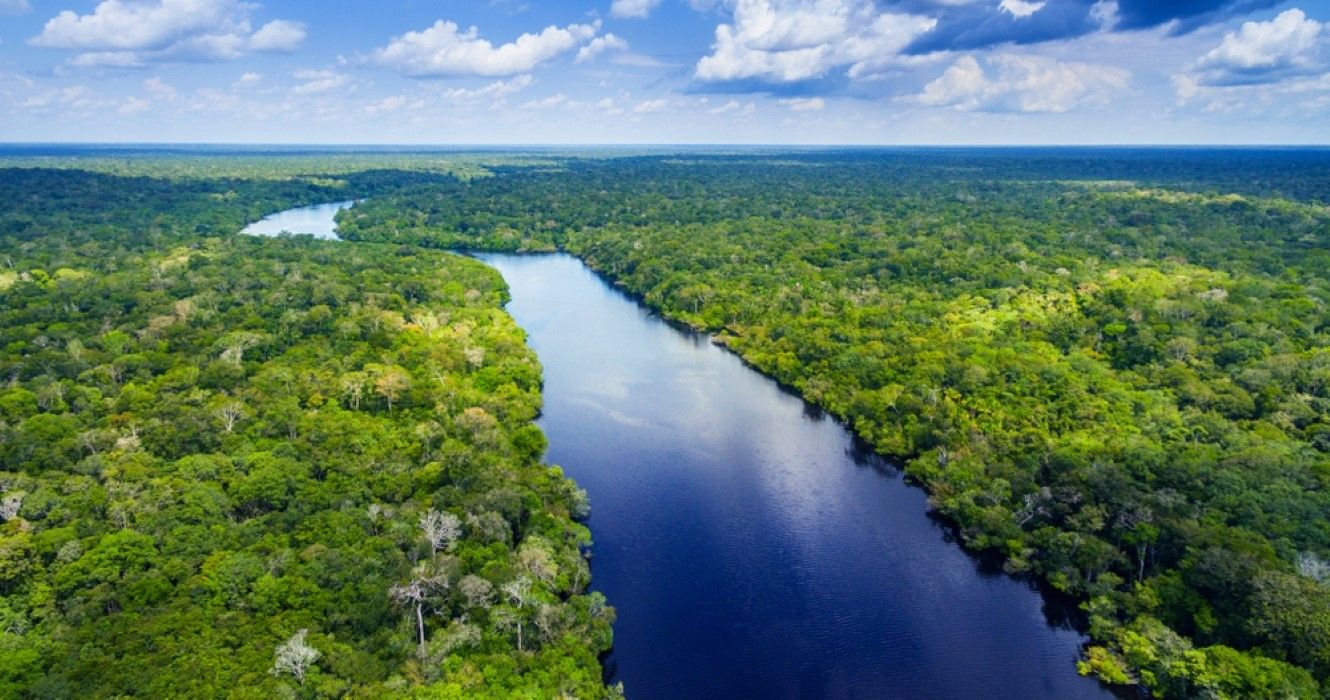The Amazon, being the largest rainforest in the world, is a famous tourist destination. Over 700 million travelers tour the forest annually, and the number is expected to grow steadily. Tourists are fascinated by the Amazon River, which is among the largest in the world. Moreover, the Amazon basin harbors a variety of other ecosystems, such as swamps and natural savanna. Many plants and animal species are found on Amazon. However, the steady increase of the human population and the introduction of mechanized agriculture has threatened the continued prosperity of the Amazon rainforest. Here is how the famous rainforest is endangered.
10 Commercial Fishing
The Amazonian residents' primary source of food and income is fishing from the Amazon River. However, with the growing population, demand for more food leads to overfishing. In addition, big companies harvesting fish for export use destructive gill nets, which scoop up the whole school of fish where 60% of the catch is spoiled. This attempt to bring food to the market that seems unsustainable may damage the Amazon River's aquatic life, a vital component of the Amazon Rainforest.
9 Poaching In The Amazon
A huge population of animals in the Amazon Rainforest is in danger of being killed or smuggled. Many people across the forest illegally hunt and kill them for food or ram material for manufactured goods. In the Brazilian Amazon alone, wildlife harvesting takes away a considerable number of animals, ranging from birds, mammals, and reptiles, annually. For instance, Pioche (giant turtle from the Amazon River) and Amazon Manatee are vanishing from the rainforest. Such aspects threaten the biodiversity of the Amazon Rainforest.
8 Dams Establishment For Electricity
Large developmental corporations worldwide, such as World Bank, have funded hydroelectric projects in the Amazon. Such a move has led to a significant loss of forests. The widespread establishment of dams leads to erosion as a result of deforestation. Moreover, chemical and oil spills contaminate water bodies. What's more? Damming leads to the displacement of wildlife.
7 Logging
Amazon rainforest is highly endowed with rare hardwood ideal for furniture, charcoal, and building material. Malicious loggers illegally cut down protected tree species using forged permits. They also surpass the limits of legal permits to steal wood from indigenous lands and protected areas. Over the last half-century, more than 600,000 square kilometers have been destroyed in the name of commercial development. This compromises the forest's role in stabilizing climate and carbon storage.
6 Mining In The Amazon
The Amazon rainforest is a famous mining spot for iron, bauxite, nickel, tin, and zinc. The gold mine has single-handedly contributed to significant deforestation in the Amazon rainforest. This leads to extensive soil erosion, which harms Amazon's vegetation and indigenous plants. Moreover, harmful chemicals such as Mercury are washed into rivers and streams, damaging rare aquatic life. Water contamination also harms the lives of animal species and people inhabiting the Amazon rainforest.
5 Smuggling And Bio-Piracy Of Indigenous Plants And Animals
People from the Amazon and beyond capture rare animals and plants from the Amazon rainforest and sell them overseas. Such species are highly demanded as pets, food, and medicine. However, illegal smuggling leads to overexploitation which threatens extinction. Moreover, foreigners rarely share the huge profits from these products with locals who can use them for restoration purposes.
4 Clearing Land For Agriculture
Increased population has accelerated the aspect of human settlement in the Amazon. It has also led to the introduction of mechanized farming to integrate the region into the global economy. Production of leather, soy, oil, minerals, and gas for export calls for clearing huge potions of the Amazon rainforest, which results in forest degradation and deforestation. Since 1970, more than 1.4 million hectares have been cleared, affecting a great deal of forest biodiversity.
3 Cattle Farming In Amazon Rainforest
Converting forests into cattle grazing fields is a critical driver of deforestation in the Amazon. In Brazil, more than half of the cleared Amazon land ends up as pasture. However, ranching has negatively affected the forest since it is a primary reason for land claims rather than producing valuable goods like beef and leather. What more? This forest is a must-visit for animal lovers. But cattle farming has destroyed the habitat of thousands of birds and reptiles in the Amazon rainforest.
2 Urban Residential Expansion
Residential and urban expansion in the Amazon has caused huge forest loss. Deforestation caused begs for planting trees because it leads to greenhouse gas emissions. Increased migration to the Brazilian cities has led to excessive cutting down of indigenous trees for furniture. Besides, clearing land for construction destroys the natural habitat for wildlife.
1 Climate Change
Global climate change increases the temperature in the tropical Atlantic, reducing rainfall across many sections of the Amazon. This leads to drought and exposes the rainforest to wildfire. Continuation of current heating levels may turn the southern part of the Amazon rainforest into a savanna. Such a transition may adversely affect the ecological and economic aspects of the South American region by reducing rainfall. Moreover, millions of species inhabiting the forest may die, which triggers more carbon emissions.

